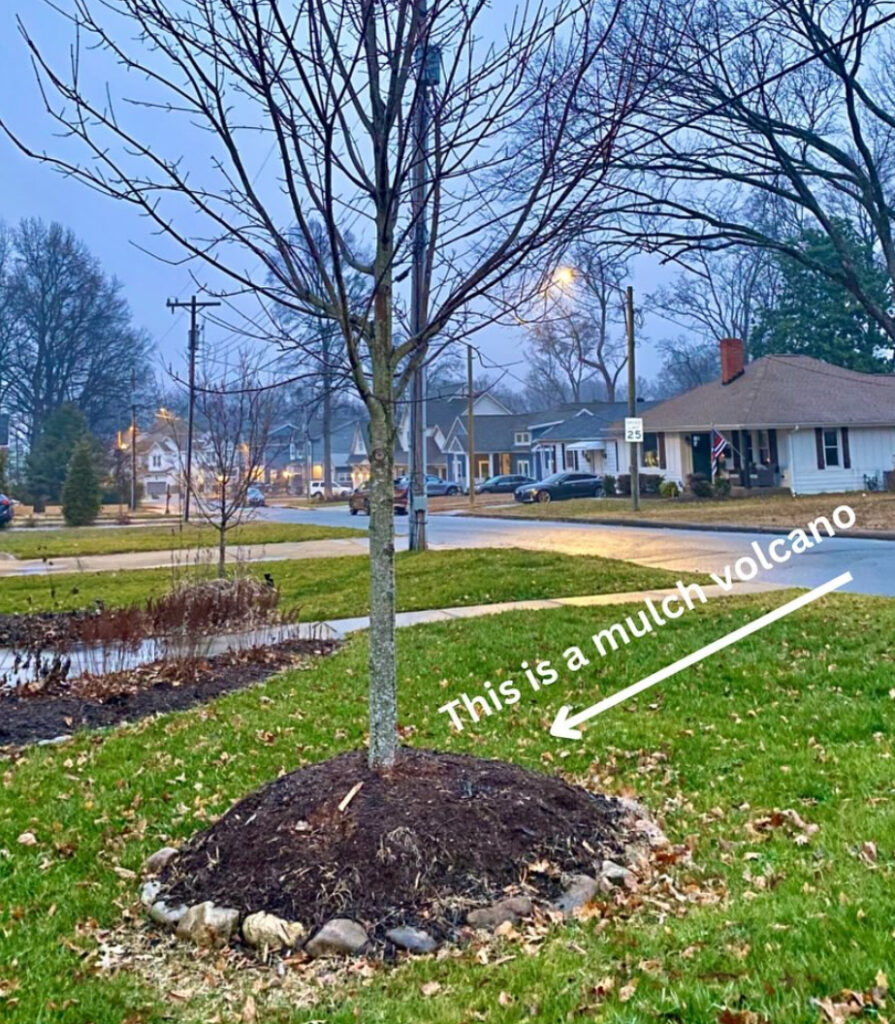Landscaping with Trees in Mind
Conservation Easements & Saving Large, Mature Trees
4.26.24Have you voted for us at Target?
5.01.24Landscaping tools save us time in the garden, but they have the potential to do a lot of damage to plants and trees. Many people don’t realize that the most active, growing part of a tree lies in a thin, fragile layer of cells (the cambium) just underneath the bark of a tree’s trunk and branches. The tree’s bark helps protect this layer, but thin-skinned trees and young trees don’t offer as much protection. Because of this, extra care must be taken to prevent cutting the trunk of a tree when operating power tools such as lawn mowers and string trimmers. It is especially damaging to a tree when the bark is cut all or most of the way around (often from string trimmers) because the tree can no longer uptake water and nutrients, which results in girdling and often tree death. The easiest way to prevent this damage is to stay clear of the tree’s trunk by ensuring the tree has an adequate ring of mulch around it. Mulch donuts only, please – no volcanoes!

Furthermore, landscapers and gardeners should take extra precautions when pruning young trees. There are many reasons why it’s a good idea to prune a tree when it’s young: to proactively establish a good structure with a central leader, to remove dead or diseased branches, to control growth and prevent branches from rubbing each other or growing in a direction that will cause future problems, to remove branches that are going to contact power lines or buildings, or even to promote fruit or flower production. But pruning a tree incorrectly can cause irreparable damage to the tree. It’s important to learn proper pruning techniques or leave the job to a professional arborist who has the training to know what’s best for the tree. This video offers a brief tutorial on proper pruning techniques.
If you’d like to learn more about how to prune properly, sign up to become a TreeKeeper and receive in-person training from an ISA Certified Arborist.
Have you ever heard the phrase “topping a tree?” Did you know that topping weakens the structure of the tree and causes permanent damage? When people do this to Crape Myrtle trees, it’s commonly called “Crape Murder.” Contrary to the opinion of many, it’s a bad practice for any tree because it removes the engine of the tree (the leaves!) and limits the tree’s ability to store energy. There’s a lot of misinformation out there and many people think this is a necessary practice for crape myrtles to bloom. Please read on to learn more about why this is a bad idea by visiting our post “Say No to Topping.”

